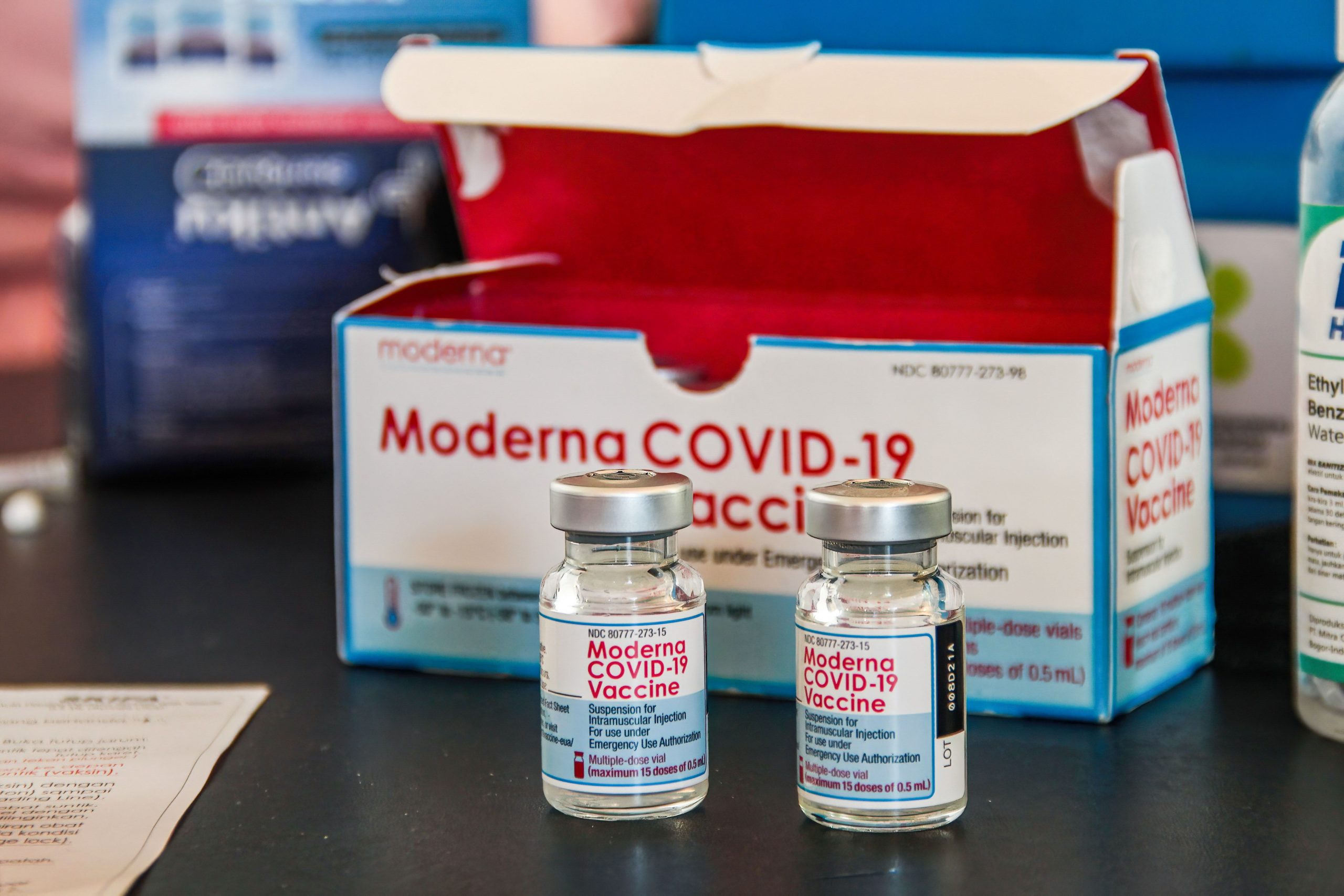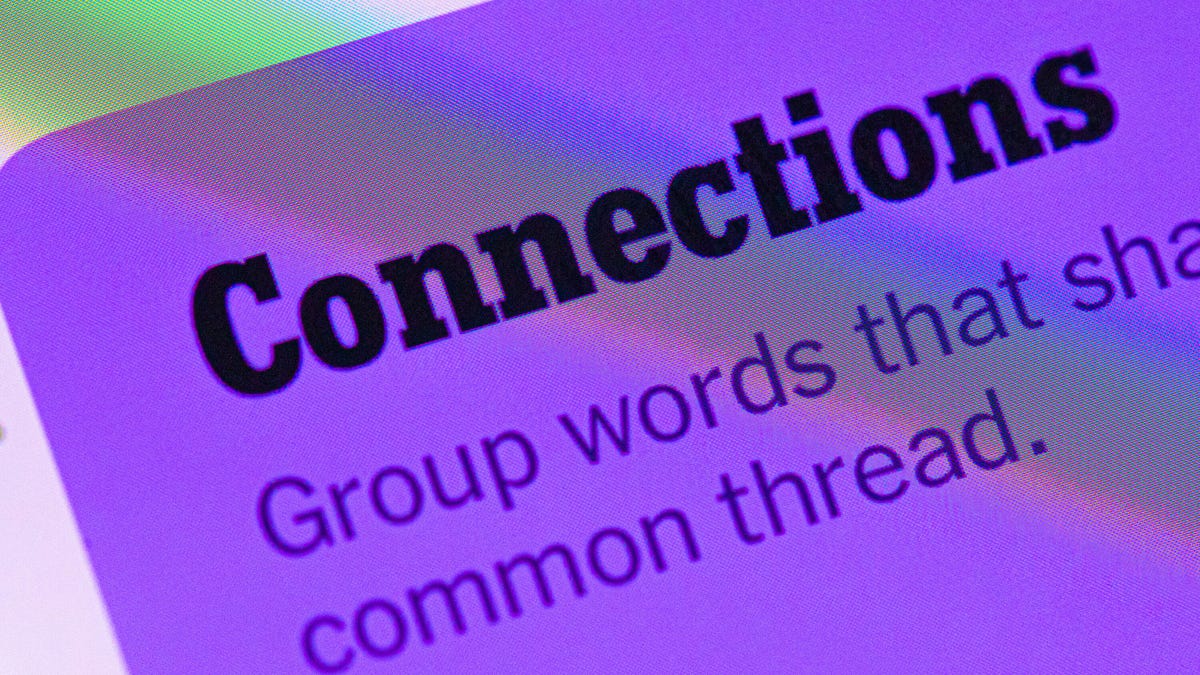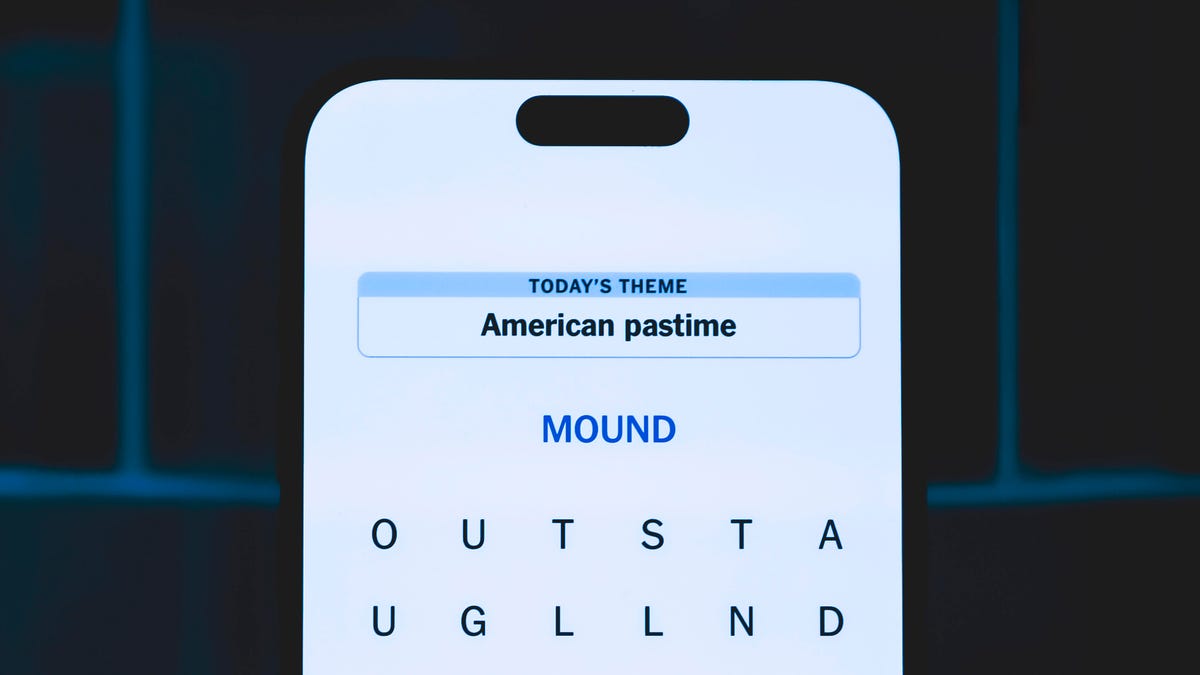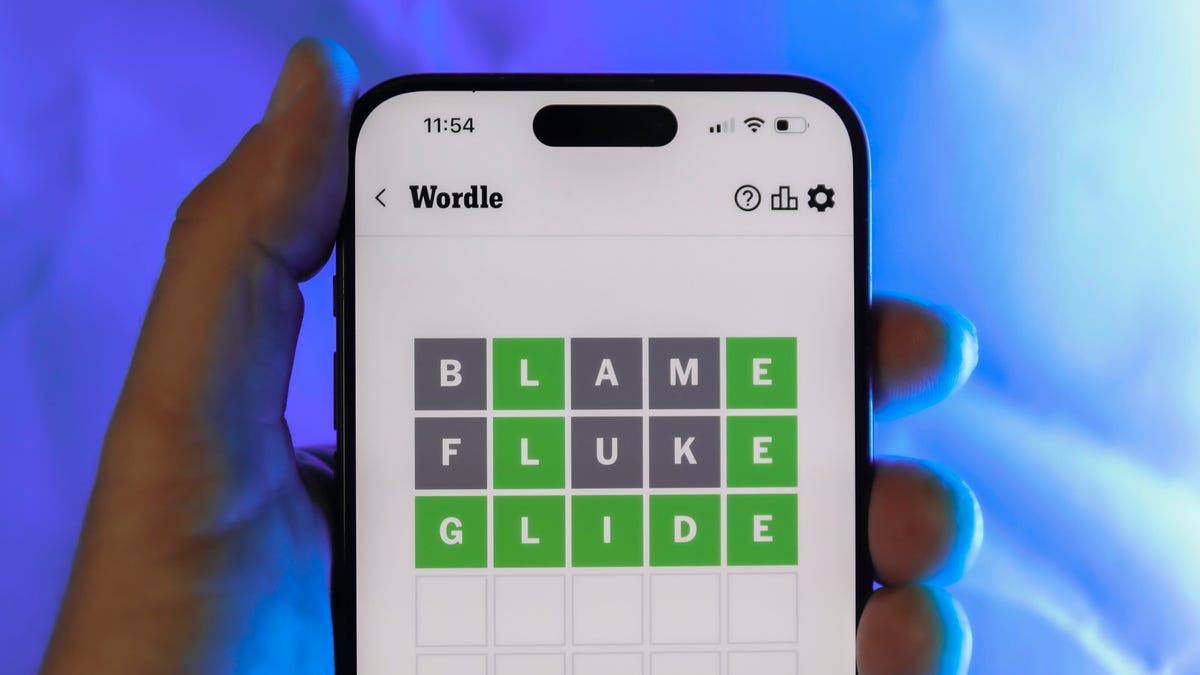Technologies
Moderna booster update: How well and how long does it protect against omicron?
New research shows that the Moderna COVID-19 vaccine booster can defend against the omicron variant. But for how long?

New research demonstrates that mRNA boosters — like Moderna’s and Pfizer’s — offer significant protection against the new omicron variant of COVID-19. However, data from the UK on Friday indicates that booster effectiveness starts to decrease notably after 10 weeks. And as countries like Germany and South Korea have shortened the wait time for booster shots, US experts are considering a similar approach.
In a technical briefing released Friday, the UK Health Security Agency announced that the Oxford/AstraZeneca, Pfizer/BioNTech and Moderna vaccines all protect against omicron less than they did against delta and that protection from boosters wanes in time. Booster effectiveness generally decreased from 60% to 70% protection at two to four weeks after the shot, down to 35% to 45% at 10 weeks, depending on the combination of vaccines administered.
The UK report also adds weight to the hope that omicron infections are less severe than with the delta variant, noting that the risk of hospitalization from omicron is about three-fifths of that from delta.
On ABC’s This Week on Sunday, Dr. Ashish Jha, dean of the Brown University School of Public Health, discussed the possibility of shortening the wait time for boosters. He noted, «The data suggests both from Moderna and Pfizer vaccines that shortening it to as little as three months, but probably more in the sort of four to five months range, because we do see a waning of the immunity of the antibodies by four to five months.»
In a report published Wednesday on the preprint site Medrxiv, scientists at Copenhagen’s Statens Serum Institut examined health records of 3 million Danes taken between Nov. 20 and Dec. 12. They found vaccine effectiveness among seniors 60 and older who had received a booster dose 14 to 44 days earlier averaged 54.6%, according to Reuters. (That’s comparable to the rate found shortly after receiving one shot of the Pfizer vaccine, which quickly wanes.)
Their research hasn’t been peer-reviewed yet, but it follows preliminary data from last week indicating Moderna’s half-dose COVID booster shot can raise antibody levels against omicron 37 fold. Moderna President Stephen Hoge said during a conference call that the lab results were «reassuring» and put booster recipients «comfortably» above the level of a breakthrough risk.
Moderna also indicated a potential double dose of the booster, 100 micrograms versus 50 micrograms, would increase omicron-neutralizing antibodies «approximately 83-fold higher than pre-boost levels.»
Omicron has quickly become the dominant strain in the US, accounting for nearly 75% of new COVID-19 cases. While it appears able to evade some of the defenses offered by two doses of the Pfizer and Moderna vaccines, boosters offer some protection against infection and are highly effective in preventing serious illness.
«The good news is when you boost someone, [protection] goes right back up,» Dr. Anthony Fauci, chief medical adviser to President Joe Biden, said on CNN last week.
On Dec. 16, a CDC advisory committee recommended Moderna’s Spikevax and Pfizer-BioNTECH’s Comirnaty, both mRNA vaccines, over Johnson & Johnson’s one-jab carrier, or virus vector, vaccine.
According to Our World in Data, the US averaged about 840,000 booster shots per day for the week ending Dec. 17, and more than 64 million Americans have been boosted since Aug. 13. The increased focus on boosters comes as the omicron variant forces the CDC, health officials and organizations to reconsider what it means to be «fully vaccinated.» President Biden recently announced new plans — including «free» at-home COVID-19 test kits and stricter rules for international travelers — to protect Americans from the surging omicron variant.
The CDC urges anyone 18 years or older to get a booster six months after their second dose of Moderna or Pfizer (and anyone 16 or 17 years old to get a booster six months after their second dose of Pfizer).
So far, the vaccines have proven highly effective in preventing serious reactions and death from COVID-19. People who are unvaccinated are 10 times more likely to be hospitalized if infected. With the federal vaccine mandate expected to start next month, the Biden administration expects even more Americans to get the jab. The government has also ordered 13 million courses of antiviral drugs in anticipation of higher caseloads this winter.
Here’s what you need to know about the Moderna booster, including doses, side effects and how to get a free ride. to your vaccination appointment. For even more details, here’s the latest on COVID-19 vaccines for kids, how you can soon get a free COVID-19 test kit and what to know about breakthrough infections.
How effective is the Moderna booster against the omicron variant?
On Monday, Moderna’s Hoge said early lab research shows the pharmaceutical company’s COVID-19vaccine booster provides «good protection against the omicronvariant» by raising antibody levels approximately 37 fold. Forcomparison, Pfizer said earlier this month its booster raises antibody levels 25 fold,creating «robust protection» and offering «a sufficientlevel of protection» against omicron.
Studies of omicron variant infections in the US appear to support the concern about weakened protection for those who are fully vaccinated with two doses of the Moderna and Pfizer vaccines or one of Johnson & Johnson’s, but did not get a booster yet. Dr. Rochelle P. Walensky, CDC director, said Dec. 10 that80% of the first confirmed US cases with the mutated strain had been in patients who were fullyvaccinated.
Is Moderna working on additional COVID vaccine boosters?
On Monday, Moderna president Stephen Hoge said the company’s current 50-microgram COVID booster gives «quite respectable» protection. The company is continuing to study an omicron-specific vaccine and a multivalent one that could protect against other variants, including the alpha and delta strains, in case either is needed.
The company said it is also studying a 100-microgram version of its current vaccine booster, which appears to raise antibody protection 83 fold. Hoge said Moderna could have new versions of its vaccine ready early in 2022 but is not planning to ask the CDC and FDA to amend its booster authorization for the 100-microgram trial version of its booster.
Will we need an annual COVID booster shot?
With vaccines appearing to offer waning protectionand a continuing evolution of COVID variants, Hoge said we will most likely needseasonal boosters, much like we do with the flu, at least toprotect those at high risk of infection. The new research from UKHSA strongly indicates reduced protection from vaccine boosters after 10 weeks.
The CDC updated its guidanceto indicate that, starting in 2022, some immunocompromised people will be able to get afourth COVID-19 booster shot.
When is it time to get a COVID-19 vaccine booster shot?
If you got Moderna or Pfizer jab, you’re eligible for a booster six months after the date of the second shot listed on yourvaccination card. Two months after the Johnson & Johnson vaccine is the time for a booster (more below).
The CDC and other health authorities are now urging people to get boosters as soon as they’re eligible, to keep the immune response againstomicron, delta and other coronavirus variants of concern as strong as possible.
On Dec. 2, President Biden outlined a plan forMedicare to contact the 64 million people it serves and for AARP toreach out to its 38 million members about getting a booster shot. Pharmacies like Walgreens,CVS and Rite Aid are contacting customers who got a vaccine attheir stores when it’s time to schedule a booster.
Should people who are pregnant get a booster shot?
The COVID-19 booster recommendations apply to all people 18 years and older, including those who are pregnant. The CDC urges pregnant people to get a COVID-19 vaccine, a booster is half a full vaccine dose.
«People who are pregnant or recently pregnant are more likely to get severely ill with COVID-19 compared with people who are not pregnant,» the CDC says on its website.
While there is no evidence that getting vaccinated decreases fertility in women or men, a recent study also linked COVID-19 infection in pregnant people to a higher risk of stillbirth.
Is the Moderna booster shot a third dose of the vaccine?
Booster shots of COVID-19 vaccines are currently half doses of the same vaccine used in the first two full shots. The goal is to top up the formula and reinforce the body’s immune response against the virus and its variants. While the first two shots of the Moderna vaccine were each 100 micrograms, the booster is a 50-microgram dose.
Moderna is also working on a combination shot that contains this year’s flu vaccine and its COVID-19 booster vaccine, but that’s not available right now.
How do I know which pharmacies have Moderna booster shots available?
Boosters are available at roughly 80,000 locations across the US, including over 40,000 pharmacies. Some 90% of Americans have a vaccine site within five miles of where they live.
A free service backed by the CDC sends you information on vaccine sites when you text your ZIP code to this number: 438829. The response will show you COVID-19 vaccine locations in your area, along with the brands they carry for certain age groups, for instance, Moderna 18+. This can save you from having to call around, or show up to an appointment to find that your booster of choice isn’t available. The text message also offers a shortcut to make your appointment right from your phone screen.
In addition, you can check Vaccines.gov to see which vaccines are available where, or call 800-232-0233 for additional vaccine information.
How can I get a free ride to get my booster shot?
Lyft and Uber are offering free rides for some people who need them. An easy way to access those links for more information is through the text feature above. You can also go to Lyft.com/vax or call Uber at 855-921-0033.
Who can get a Moderna booster shot right now?
On Nov. 19, all US adults 18 and older became eligible to receive COVID-19 booster shots if it’s been at least six months since they’ve received a second dose of either the Moderna or Pfizer vaccine. Those who received the Johnson & Johnson vaccine are eligible for a booster dose after two months. Adults are encouraged to get whatever booster dose is available, even if that means mixing and matching vaccine boosters (more below).
What are the side effects of Moderna’s booster?
Moderna says possible side effects for its booster shot are similar to those from the two primary doses, and include pain or swelling at the injection site, as well as fatigue, muscle pain, headache, fever, chills and nausea.
The good news is, according to the CDC, those who got the Moderna booster dose reported far fewer reactions than they did after the second dose of the vaccine.
Is it safe to mix and match vaccine and booster brands?
Yes. The US Food and Drug Administration has authorized mixing COVID-19 boosters, which in the US means Moderna and Pfizer. Any adult eligible for a booster can get any of the available brands of coronavirus vaccines. If you initially received Johnson & Johnson and it’s been two months or longer since you received the initial dose, you’ll be able to get the Moderna or Pfizer booster. If you received Moderna or Pfizer for your first two shots, you could pick any authorized vaccine available to you, if you qualify and it’s been six months or longer since your second shot.
In its study, the CDC found 95% of those who got Moderna for the first round of vaccine shots chose Moderna for the booster dose.
Is the Moderna COVID-19 booster shot still free?
All booster shots will be free, regardless of immigration or health insurance status. However, depending on where you get your booster shot — for example, at a local pharmacy — you may be asked to provide your insurance card information, including your name, date of birth and membership number. But ou will not be charged for your COVID-19 vaccine or booster shot.
What does the Moderna booster shot do?
As the vaccine’s effectiveness decreases over time, a COVID-19 booster shot — whether from Moderna, Pfizer or Johnson & Johnson — recharges your body’s immune response and guards against a breakthrough infection.
Recent studies of the Pfizer and AstraZeneca vaccines show that their effectiveness can begin to wane after six months. Moderna said early data suggests that those who received the Moderna vaccine in 2020 are showing a higher rate of breakthrough COVID-19 infections than those vaccinated this year, suggesting the need for a booster to maintain high levels of protection.
For more on coronavirus treatments and vaccines, here’s what we know about monoclonal antibody treatments, the new federal vaccine mandates and why some people may not want the shot.
The information contained in this article is for educational and informational purposes only and is not intended as health or medical advice. Always consult a physician or other qualified health provider regarding any questions you may have about a medical condition or health objectives.
Technologies
Today’s NYT Connections Hints, Answers and Help for Dec. 26, #929
Here are some hints and the answers for the NYT Connections puzzle for Dec. 26 #929

Looking for the most recent Connections answers? Click here for today’s Connections hints, as well as our daily answers and hints for The New York Times Mini Crossword, Wordle, Connections: Sports Edition and Strands puzzles.
Today’s NYT Connections puzzle is full of fun pop-culture references. Read on for clues and today’s Connections answers.
The Times has a Connections Bot, like the one for Wordle. Go there after you play to receive a numeric score and to have the program analyze your answers. Players who are registered with the Times Games section can now nerd out by following their progress, including the number of puzzles completed, win rate, number of times they nabbed a perfect score and their win streak.
Read more: Hints, Tips and Strategies to Help You Win at NYT Connections Every Time
Hints for today’s Connections groups
Here are four hints for the groupings in today’s Connections puzzle, ranked from the easiest yellow group to the tough (and sometimes bizarre) purple group.
Yellow group hint: Golden state cliches.
Green group hint: Funny films.
Blue group hint: Rock on.
Purple group hint: Not white.
Answers for today’s Connections groups
Yellow group: California-based character tropes.
Green group: Comedy subgenres.
Blue group: ’70s rock bands.
Purple group: Black ____.
Read more: Wordle Cheat Sheet: Here Are the Most Popular Letters Used in English Words
What are today’s Connections answers?
The yellow words in today’s Connections
The theme is California-based character tropes. The four answers are movie exec, surfer, tech bro and Valley Girl.
The green words in today’s Connections
The theme is comedy subgenres. The four answers are buddy, cringe, screwball and stoner.
The blue words in today’s Connections
The theme is ’70s rock bands. The four answers are America, Chicago, Foreigner and Journey.
The purple words in today’s Connections
The theme is black ____. The four answers are Forest, Friday, Panther and Widow.
Don’t miss any of our unbiased tech content and lab-based reviews. Add CNET as a preferred Google source.
Technologies
Today’s NYT Strands Hints, Answers and Help for Dec. 26 #663
Here are hints and answers for the NYT Strands puzzle for Dec. 26, No. 663.

Looking for the most recent Strands answer? Click here for our daily Strands hints, as well as our daily answers and hints for The New York Times Mini Crossword, Wordle, Connections and Connections: Sports Edition puzzles.
Today’s NYT Strands puzzle is a fun one, but you might struggle at first to see a connection between the words. If you need hints and answers, read on.
I go into depth about the rules for Strands in this story.
If you’re looking for today’s Wordle, Connections and Mini Crossword answers, you can visit CNET’s NYT puzzle hints page.
Read more: NYT Connections Turns 1: These Are the 5 Toughest Puzzles So Far
Hint for today’s Strands puzzle
Today’s Strands theme is: Please hold.
If that doesn’t help you, here’s a clue: Cats love these more than they love expensive toys.
Clue words to unlock in-game hints
Your goal is to find hidden words that fit the puzzle’s theme. If you’re stuck, find any words you can. Every time you find three words of four letters or more, Strands will reveal one of the theme words. These are the words I used to get those hints, but any words of four or more letters that you find will work:
- BOXING, CHEAT, HEAT, SMOCK, MOCK, LATE, TEAM, MEAT, TEAMS, LOOT, TOLE, BALL, BALE, KALE, TALL
Answers for today’s Strands puzzle
These are the answers that tie into the theme. The goal of the puzzle is to find them all, including the spangram, a theme word that reaches from one side of the puzzle to the other. When you have all of them (I originally thought there were always eight but learned that the number can vary), every letter on the board will be used. Here are the nonspangram answers:
- GIFT, SHOE, TOOL, LUNCH, MATCH, PIZZA, BALLOT, TACKLE (All are words that can be placed in front of «box.»)
Today’s Strands spangram
Today’s Strands spangram is BOXINGDAY. To find it, start with the B that’s four letters down on the far-left row, and wind across and then down.
Don’t miss any of our unbiased tech content and lab-based reviews. Add CNET as a preferred Google source.
Technologies
Today’s Wordle Hints, Answer and Help for Dec. 25, #1650
Here are hints and the answer for today’s Wordle for Dec. 25, No. 1,650.

Looking for the most recent Wordle answer? Click here for today’s Wordle hints, as well as our daily answers and hints for The New York Times Mini Crossword, Connections, Connections: Sports Edition and Strands puzzles.
Today’s Wordle puzzle has some tough-to-guess letters. If you need a new starter word, check out our list of which letters show up the most in English words. If you need hints and the answer, read on.
Read more: New Study Reveals Wordle’s Top 10 Toughest Words of 2025
Today’s Wordle hints
Before we show you today’s Wordle answer, we’ll give you some hints. If you don’t want a spoiler, look away now.
Wordle hint No. 1: Repeats
Today’s Wordle answer has no repeated letters.
Wordle hint No. 2: Vowels
Today’s Wordle answer has one vowel.
Wordle hint No. 3: First letter
Today’s Wordle answer begins with P.
Wordle hint No. 4: Last letter
Today’s Wordle answer ends with M.
Wordle hint No. 5: Meaning
Today’s Wordle answer can refer to a geometric figure.
TODAY’S WORDLE ANSWER
Today’s Wordle answer is PRISM.
Yesterday’s Wordle answer
Yesterday’s Wordle answer, Dec. 24, No. 1649, was SPOOL.
Recent Wordle answers
Dec. 20, No. 1645: WHITE
Dec. 21, No. 1646: QUILT
Dec. 22, No. 1647: CONCH
Dec. 23, No. 1648: GLINT
Don’t miss any of our unbiased tech content and lab-based reviews. Add CNET as a preferred Google source.
What’s the best Wordle starting word?
Don’t be afraid to use our tip sheet ranking all the letters in the alphabet by frequency of uses. In short, you want starter words that lean heavy on E, A and R, and don’t contain Z, J and Q.
Some solid starter words to try:
ADIEU
TRAIN
CLOSE
STARE
NOISE
-

 Technologies3 года ago
Technologies3 года agoTech Companies Need to Be Held Accountable for Security, Experts Say
-

 Technologies3 года ago
Technologies3 года agoBest Handheld Game Console in 2023
-

 Technologies3 года ago
Technologies3 года agoTighten Up Your VR Game With the Best Head Straps for Quest 2
-

 Technologies4 года ago
Technologies4 года agoBlack Friday 2021: The best deals on TVs, headphones, kitchenware, and more
-

 Technologies4 года ago
Technologies4 года agoVerum, Wickr and Threema: next generation secured messengers
-

 Technologies4 года ago
Technologies4 года agoGoogle to require vaccinations as Silicon Valley rethinks return-to-office policies
-

 Technologies4 года ago
Technologies4 года agoOlivia Harlan Dekker for Verum Messenger
-

 Technologies4 года ago
Technologies4 года agoiPhone 13 event: How to watch Apple’s big announcement tomorrow
